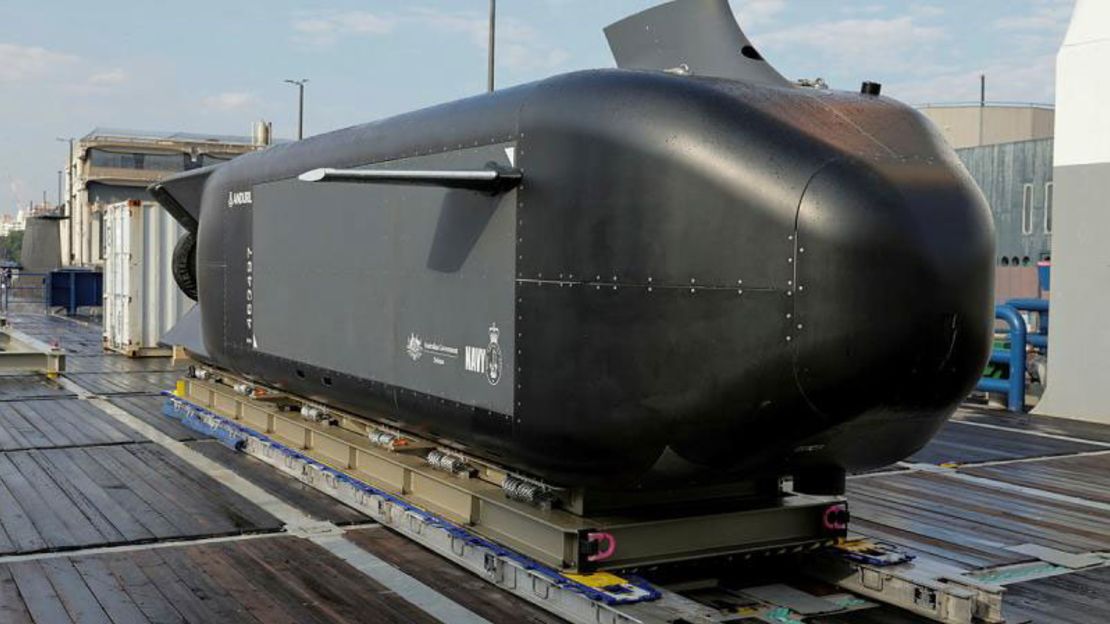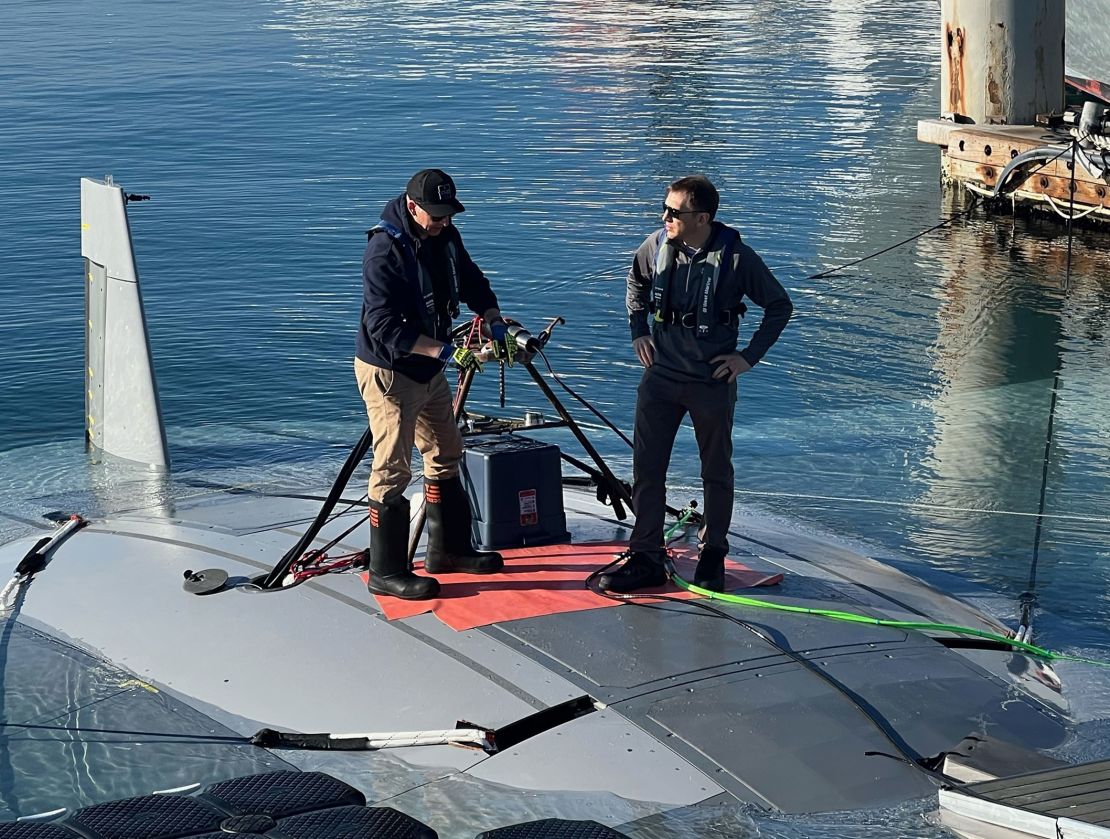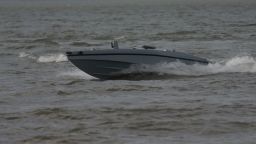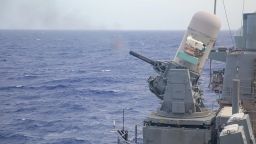Ghost Shark and Manta Ray protect the undersea realm. Sounds like the plot of a future Marvel movie, but in actual fact, it’s what could be the future of Pacific naval defenses.
Ghost Shark and Manta Ray are the names of prototype uncrewed underwater vehicles – UUVs or drones – introduced recently by Australia and the United States respectively.
Experts say the submersibles could represent the future of undersea warfare, showing the ability to exert power while minimizing the danger to human life.
The use of drones in aerial warfare has become commonplace. The US used them extensively during conflicts in Iraq and Afghanistan beginning in the 1990s, and newer, cheaper drones have become key pieces of military hardware for both sides in Russia’s invasion of Ukraine.
Kyiv has also built naval surface drones, which have inflicted heavy losses on the much larger and more expensive ships of Russia’s Black Sea Fleet.
Aerial and surface sea drones can be controlled using satellites and light and radio waves. But those don’t function in the same way in the depths.
A 2023 study published in the Swiss journal Sensors points out that underwater communications require more energy but still see significant data loss to variables including water temperature, salinity and depth.
Makers of the new generation of military UUVs aren’t saying how they would overcome communications problems.
But when Australia unveiled Ghost Shark last month, it called the prototypes “the most advanced undersea autonomous vehicles in the world.”

“Ghost Shark will provide Navy with a stealthy, long-range autonomous undersea warfare capability that can conduct persistent intelligence, surveillance, reconnaissance (ISR) and strike,” a statement from the Australian Defense Ministry said, adding that it expects the first production models to be delivered by the end of next year.
Australian officials and those from manufacturer Anduril Australia said they could not share any of the specs on Ghost Shark as those remain classified.
But they touted the speed with which the submersible has gone from idea to testing, with the program having started just two years ago.
“Being ahead of schedule, on budget, it’s pretty unheard of,” Shane Arnott, Anduril’s senior vice president for engineering, told reporters.
“Delivering the first Ghost Shark prototype ahead of schedule sets a new standard for capability development at the speed of need,” Australia’s chief defense scientist, Tanya Monro, said in a statement.
Emma Salisbury, a fellow at the British think tank Council on Geostrategy, said the Ghost Shark seems much like the Orca extra-large UUV being developed in the US.
“I assume that they are all intended for roughly similar mission sets – persistent intelligence, surveillance, reconnaissance and strike capability, particularly in the anti-submarine domain,” Salisbury said.
The US Navy called the Boeing-built Orca UUV “a cutting-edge, autonomous, unmanned diesel-electric submarine with a modular payload section to execute a variety of missions” in a December news release on the delivery of a first Orca test platform, an early prototype.
Having a modular payload means the Orca in theory could carry different weapons varieties depending upon the task or be fitted with specialized equipment for reconnaissance or possibly intelligence gathering.
The release said the Pentagon would acquire five more of the UUVs, without giving a timetable. But the US Orca has been in the works for more than a decade, the Navy release said, a sharp contrast to the speed with which Australia has developed Ghost Shark.
Chris Brose, Anduril’s chief strategy officer, said the company and Australia are in the “process of proving” that “these kinds of capabilities can be built much faster, much cheaper, much more intelligently.”
Anduril Australia said the entirely domestically developed Ghost Shark would be made available for export after it joins the Australian naval fleet.
Manta Ray trials
Meanwhile, back across the Pacific, the Orca isn’t the only UUV being developed in the US.
America’s latest UUV entry is Northrop Grumman’s Manta Ray, a prototype of which was tested off Southern California in February and March.
The Defense Advanced Research Products Agency (DARPA), the Pentagon branch in charge of developing new technologies, says Manta Ray’s strength is in its modularity, the ability to switch out payloads depending on the mission.
It can be broken down and fit into five standard shipping containers, move to where it’s going to be deployed, and reassembled in the field, according to Northrop Grumman.
The prototype was built in Maryland and then reassembled on the California coast.
“The combination of cross-country modular transportation, in-field assembly, and subsequent deployment demonstrates a first-of-kind capability for an extra-large UUV,” Kyle Woerner, who heads the Manta Ray program at DARPA, said in an agency news release.

He also noted the modular transport method means the Manta Ray can save internal energy for its mission, rather than using it to get to the deployment site.
Like the Orca, the Manta Ray hasn’t come together as quickly as Ghost Shark. Its program began in 2020 and DARPA didn’t give a goal for the Manta Ray – or some variant of it – to join the US fleet.
“DARPA is engaging with the U.S. Navy on the next steps for testing and transition of this technology,” the agency’s release said.
Meanwhile, China, named by the US military as its “pacing threat” in the Pacific, is also making advances in UUVs, Salisbury said.
“While details are scarce, as with most Chinese capabilities, they have been developing them for at least 15 years and likely now have something similar to the Orca (but with torpedoes) in the testing phase,” she said.
Submarine expert H I Sutton says on his Covert Shores website that, according to an analysis of open-source intelligence, Beijing is believed to have at least six extra-large UUVs under development.
Besides Australia, the US and China, other countries working on UUVs include Canada, France, India, Iran, Israel, North Korea, Norway, Russia, South Korea, Ukraine and the United Kingdom, according to Sutton.










